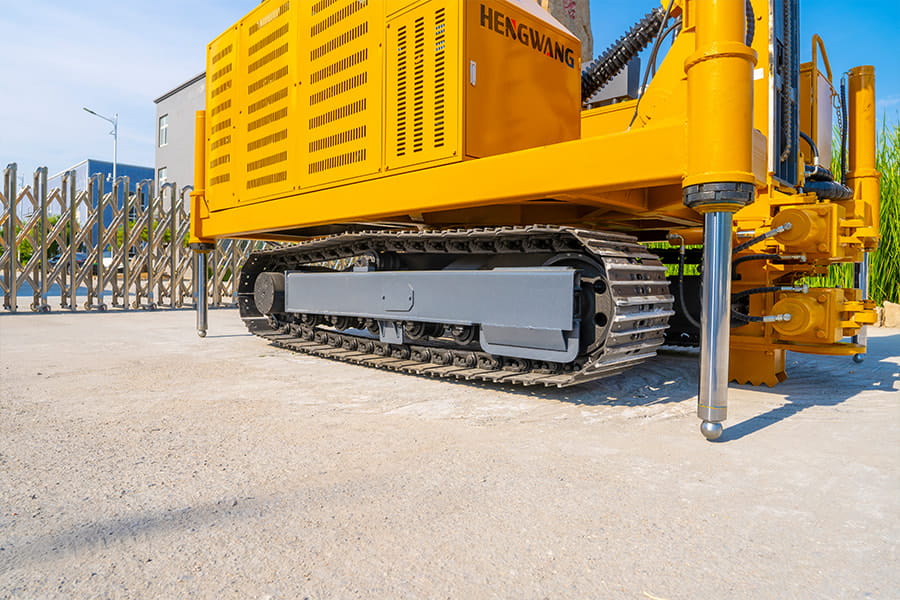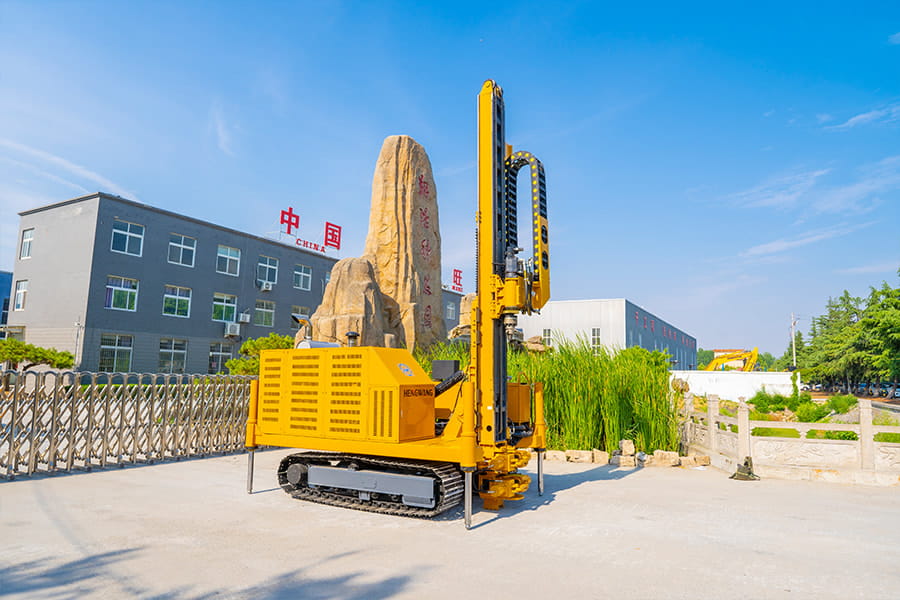


Procedure for Ground Improvement Using HWXP-150C Jet Jetting Drilling Rig:
Grout Selection:
Opt for cement-based slurries as the primary agent. In scenarios with active groundwater flow, avoid single-component cement grout; instead, employ rapid-setting dual-fluid systems (e.g., cement-sodium silicate blend) to prevent washout.
Borehole Layout:
Space injection points 1.0–2.0m apart using the Jet Jetting Drilling Rig. This configuration ensures overlapping consolidation zones, creating a continuous reinforced block in both lateral and vertical dimensions.
Setting Time Control:
Adjust grout gelation based on soil strata:
Sandy soils: 5–20 minutes
Clayey soils: 1–2 hours
Precise timing prevents premature hardening or dispersion.
Grout Volume & Coverage:
Determine injection volume and effective radius through field trials. Empirical guidelines suggest:
Clay: 15–20% grout-to-soil ratio, with ≥2m overlaying stratum thickness.
Avoid arbitrary volumes to prevent structural heave or inefficiency.
Pressure Parameters:
Optimize pressure per soil mechanics:
Soil Type Fracturing Grouting (MPa) Compaction Grouting (MPa)
Sandy Soils 0.2–0.5 N/A
Clayey Soils 0.2–0.3 N/A
Cement-Silicate Mix <1.0 ≤7.0 (slump: 25–75mm)
Higher slump mixtures tolerate lower pressures. Hengwang Group’s rigs enable precise pressure modulation during jet grouting.
Execution Workflow:
Setup: Position the HWXP-150C rig vertically (tolerance ≤1.5°), clearing obstructions.
Drilling: Advance the drill bit to target depth, supported by auxiliary anchor drilling rig stabilizers.
Injection: Initiate high-pressure fluid (20–40MPa) through the nozzle, rotating/retracting the rod to homogenize soil-grout matrix.
QC: Monitor pressure anomalies (e.g., sudden drops/surges) and validate strength via core sampling or NDT post-curing.
Applications: Ideal for silt, clay, fill, and water-saturated strata; consult Hengwang Group for challenging conditions (e.g., organic soils/rapid groundwater flow).